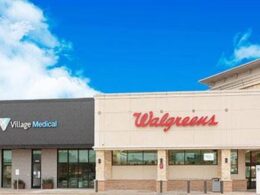Making drugs a low-margin commodity
CB Insights Research
March 8, 2022
Amazon
Since 1999, Amazon’s disruptive bravado has made “getting Amazoned” a fear for executives in any sector the tech giant sets its sights on. Here are the industries that could be under threat next.
Jeff Bezos once famously said, “Your margin is my opportunity.” Today, Amazon is finding opportunities in industries that would have been unthinkable for the company to attack even a few years ago.
Throughout the 2000s, Amazon’s e-commerce dominance paved a path of destruction through books, music, toys, sports, and a range of other retail verticals. Big box stores like Toys “R” Us, Sports Authority, and Barnes & Noble — some of which had thrived for more than a century — couldn’t compete with Amazon’s ability to combine uncommonly fast shipping with low prices.
Today, Amazon’s disruptive ambitions extend far beyond retail. With its expertise in complex supply chain logistics and competitive advantage in data collection, Amazon is attacking a whole host of new industries.
The tech giant has acquired a brick-and-mortar grocery chain, and it’s using its tech to simplify local delivery, such as machine vision-enabled assembly lines that can automatically sort ripe from unripe vegetables and fruit.
In June 2018, it acquired the online pharmacy service PillPack.
Now, it’s building out a nationwide network of pharmacy licenses and distribution with its Amazon Pharmacy product.
On its own Amazon Marketplace, the company is using its sales and forecasting data to offer de-risked loans to Amazon merchants at better interest rates than the average bank.
The tech giant saw a huge boost from the Covid-19 pandemic, as more consumers were shopping online and staying at home — Q3’20 profit hit $6.3B, up 200% from Q3’19. Although Q3’21 profits dipped to $3.2B, Amazon still has the spending power to tackle new industries.
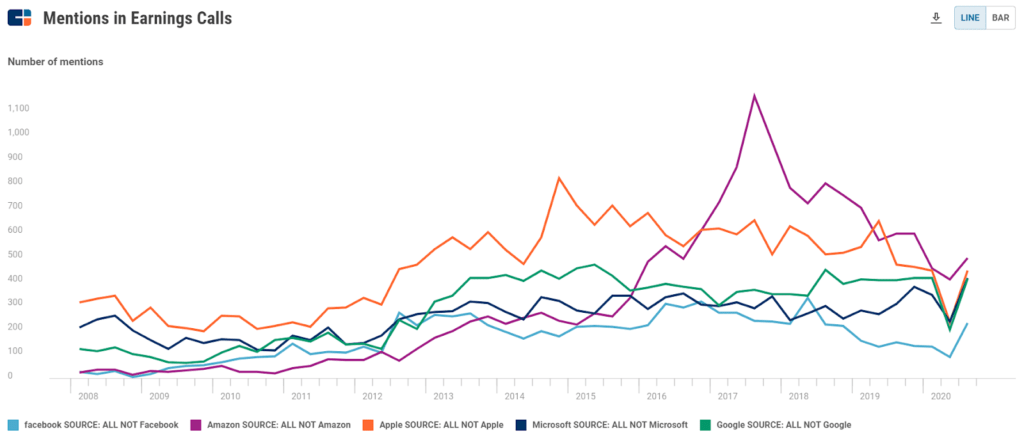
On calls with investors, executives of public American companies mentioned Amazon more often than they mentioned any other big tech company.
We researched the 5 industries where Amazon’s disruptive intentions are clearest today — pharmacies, small business lending, logistics, groceries, and payments — as well as 7 industries where Amazon’s efforts are more nascent.
The disruptive possibilities in these industries — home & garden, insurance, smart home, and luxury fashion — remain speculative for now, but with Amazon’s scale and advantages, they could soon be a reality.
Below, we lay out the case and the progress that Amazon has made thus far.
The 5 industries Amazon will disrupt in the next 5 years
- Pharmacies: Making drugs a low-margin commodity
- Small business lending: A direct, data-driven source of financing
- Fulfillment & delivery: Using the AWS model to create a new business line
- Online groceries and digitized stores: Changing the way customers grocery shop
- Payments: Giving small merchants a cheaper option
The 7 industries Amazon could go after next
- Insurance: Bundling value into the shopping experience
- Luxury goods and services: Bringing high fashion online and digitizing beauty salons
- Brick-and-mortar retail: Launching Amazon Style
- Smart home: Racing to connect the whole house
- Home & garden: Capitalizing on supply chain expertise
- Media & entertainment: Expanding into the gaming and audio markets
- Handcrafted goods: Amazon Handmade takes on Etsy
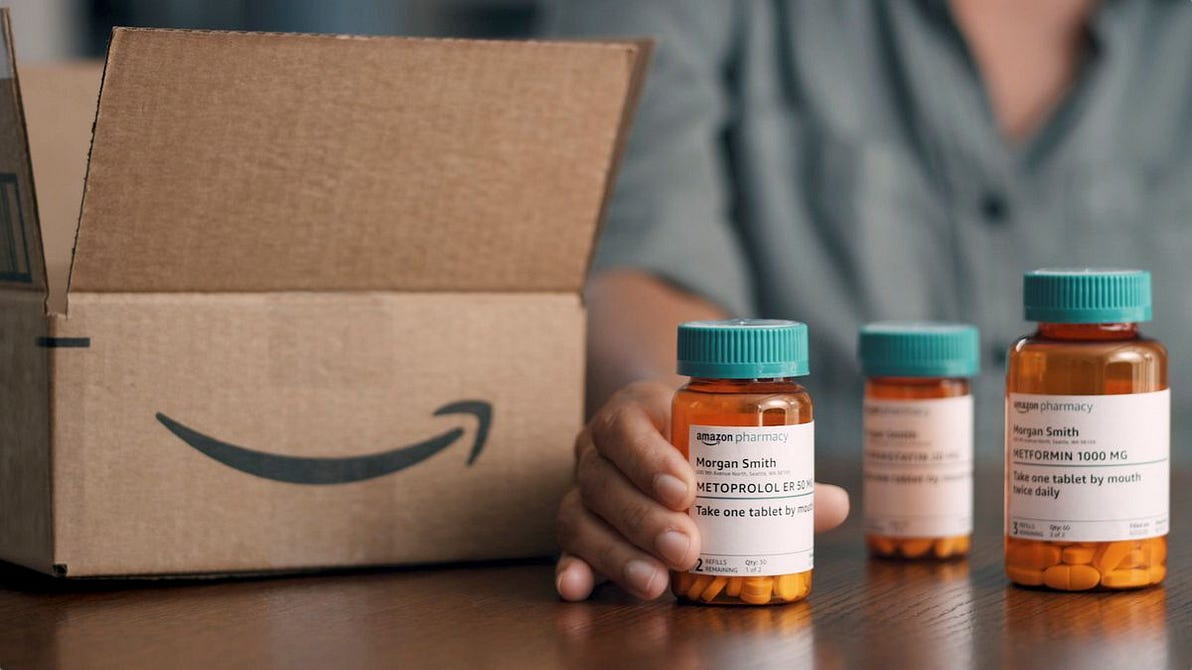
1. Pharmacies: Making drugs a low-margin commodity
Introduction
Pharmacy chains like Walgreens and CVS have already seen their retail revenues suffer from the rise of Amazon’s convenient “everything store.”
Today, they have a new challenge: in addition to disrupting their “front of the store,” Amazon is angling to disrupt their core business of drug distribution.
Amazon’s interest in disrupting the drugstore is decades old. In 1999, Amazon bought 40% of Drugstore.com (at the time, a pre-product and pre-revenue company). Bezos would later hire its CEO, Kal Raman, to run hardlines (retail products which are hard to the touch) at Amazon.
Amazon proceeded to lay low in the pharma space until 2016 when Amazon reportedly received its first licenses to sell pharmaceutical products and drugs from various state boards across the United States.
In 2018, Amazon made another move towards gaining a footing in this notoriously complex and highly regulated space: it acquired PillPack in a deal worth around $750M.
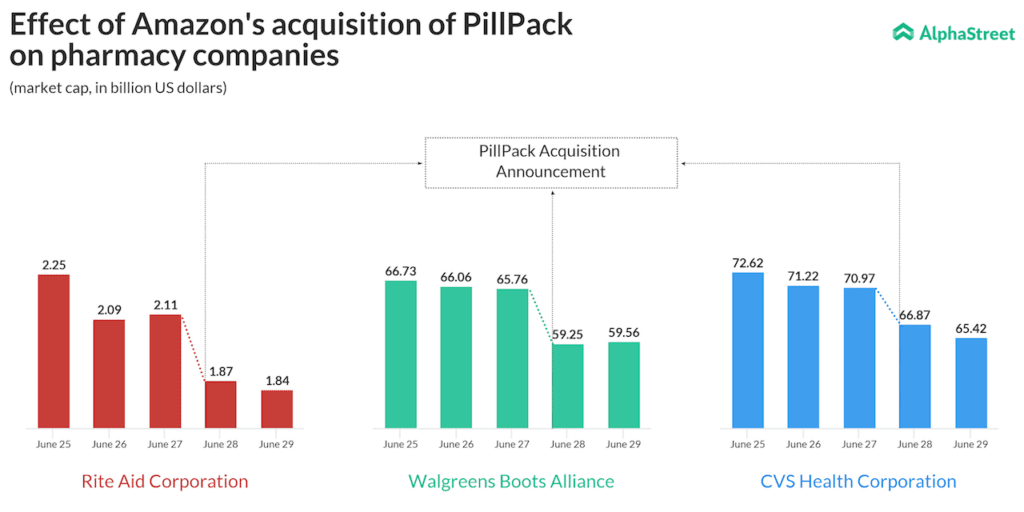
Source: AlphaStreet
The PillPack purchase was Amazon’s first significant move not just against the major drug store chains, but against the powerful pharmacy benefit managers (PBMs) that manage the dispensation of drugs for major employers, and others in the healthcare supply chain.
Amazon’s acquisition of a business with pharmacy licenses in all 50 states caused the tickers of Walgreens, CVS, and Rite-Aid to lose about $11B in value overnight.
Amazon’s acquisition of a business with pharmacy licenses in all 50 states caused the tickers of Walgreens, CVS, and Rite-Aid to lose about $11B in value overnight.
However, the Covid-19 pandemic increased the need for streamlined medication delivery and ramped up the competition between large drug stores and Amazon in the short term.
Though Amazon has an advantage in its logistics and delivery capabilities, it may need to speed up its pharma initiatives before existing pharmacies and pharmaceutical companies catch up.
WHY AMAZON IS GOING AFTER PHARMA
When it comes to pharmaceuticals, there are several reasons that Amazon — and its direct-to-consumer model — could be a good fit in the industry.
- Convenience
- Customer experience
- Partnerships
- Pre-existing customer base and distribution capabilities
- Physical stores
- Streamlined distribution
Convenience: The process of filling a prescription at a typical brick-and-mortar pharmacy is often inefficient and time-consuming, and the pandemic has prevented at-risk patients from accessing pharmacies. Amazon’s model aims to limit the effort patients need to expend while also getting prescriptions to them within a day or two.
Customer experience: Complaints from users of specialty pharmacies about errors, delays, confusing policies, and poor customer service have been common for years. Amazon’s advantage here comes in its 2 decades of e-commerce logistics experience — this could help avoid delivery mistakes, a vital consideration for serving people with complex medication needs.
Partnerships: Amazon’s healthcare partnerships could provide a large web of beta testers for new healthcare products. Amazon had been working with holding company Berkshire Hathaway and investment bank JPMorgan on Haven, a joint venture aiming to streamline healthcare for their employees. However, the project was shut down in February 2021 after challenges with gathering data due to employee healthcare costs, employee turnover within the project, and unclear goals. Amazon has since announced a new partnership with pharmacy benefit manager Prime Therapeutics. Prime’s Blue Plan members will be able to receive their medications via delivery through Amazon Pharmacy.
Pre-existing customer base and distribution capabilities: The Covid-19 pandemic has made fast and dependable medication delivery a necessity for pharmacies. CVS and Walgreens now offer free 1- to 2-day delivery from a local pharmacy, and CVS also provides same-day delivery for a fee. But with more than 200M Prime subscribers worldwide — conditioned to expect free, fast delivery on virtually any good — Amazon will likely be placed to offer better distribution than CVS or other pharmacy chains.
Physical stores: When Amazon acquired Whole Foods in 2017, it also acquired around 450 physical locations where it could theoretically dispense prescriptions the same way that CVS and Rite Aid do. These stores could serve as hubs for medication delivery, similar to how Amazon currently offers same-day Whole Foods grocery delivery. Recent reports also indicate Amazon is exploring rolling out brick-and-mortar pharmacies in its Whole Foods locations. Although there are no definite plans yet, the news triggered a drop in shares of competing drugstore chain operations like Walgreens and CVS Health.
Amazon has also opened several Amazon Fresh locations in the US. These stores are more like conventional grocers, and could contain pharmacies — either for in-store prescription pickup, or as hubs for a local delivery service.
Streamlined distribution: Amazon’s ambitions in pharmacy may not end at just delivering drugs.
The pharmaceutical supply chain involves all kinds of middlemen, each of whom takes a slice of profit as drugs make their way from the manufacturer to the end-patient user — the kind of messy business model that Amazon has special expertise in disrupting.

In broad terms, patients pay pharmacies for drugs, which pay wholesalers, which in turn pay manufacturers or distributors.
But there are additional layers that make the supply chain more complex.
Pharmacy benefit managers (PBMs) negotiate with distributors and manufacturers for better prices on bulk drugs — a service they offer to payers (insurance companies).
They also receive a copay from individual patients and get paid by manufacturers to market their drugs to payers.
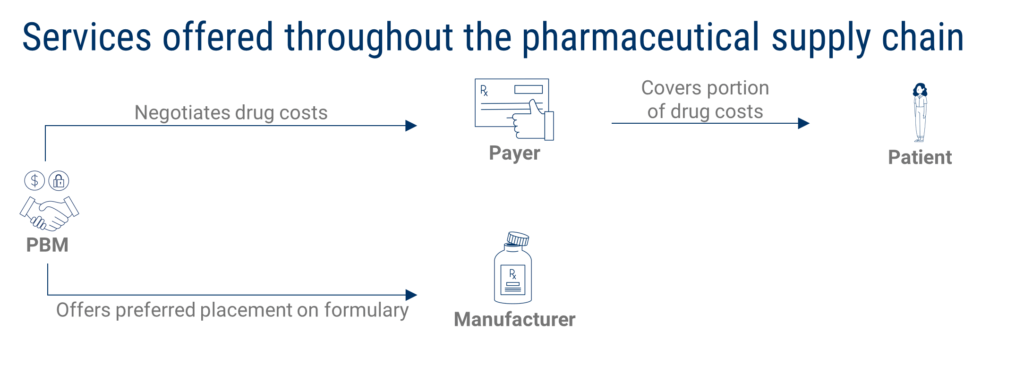
Among the different middlemen, PBMs make the lion’s share of the profit from your typical drug transaction. On the sale of a drug with a sticker price of $100, the profit breakdown is roughly:
- Wholesaler: $1.00
- Pharmacy: $5.00
- PBM: $6.00
Virtually every insurance provider outsources its drug procurement to a pharmacy benefit manager. Most major employers use PBMs as well to help negotiate for better rates on drugs for their employees.
PBM’s core advantage is that they collect from every party along the pharmaceutical supply chain. They increase their margins, while end patients pay higher drug costs because of how complex and inefficient the process is.
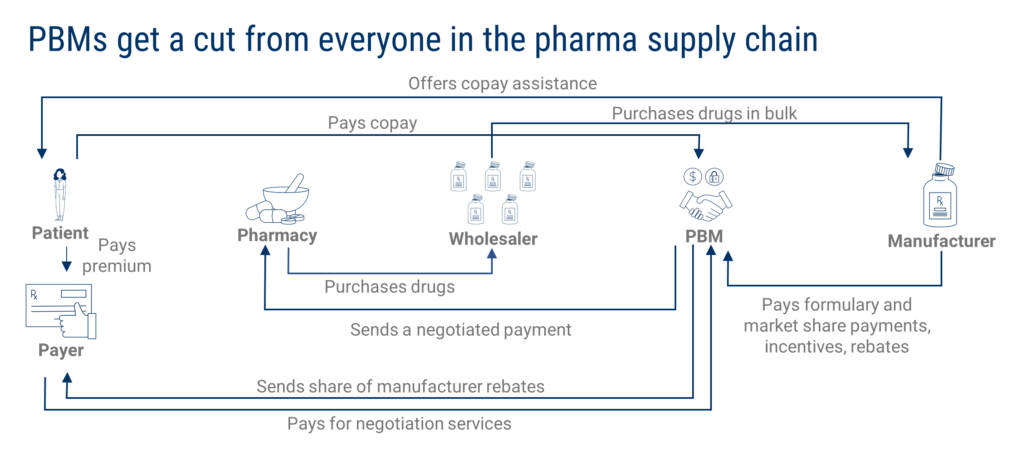
In the long-term, Amazon’s skill set and scale could give it the power to disrupt and simplify this supply chain — first in the form of pharmacies themselves, and later, by targeting wholesalers and PBMs.
In the long-term, Amazon’s skill set and scale could give it the power to disrupt and simplify this supply chain — first in the form of pharmacies themselves, and later, by targeting wholesalers and PBMs.
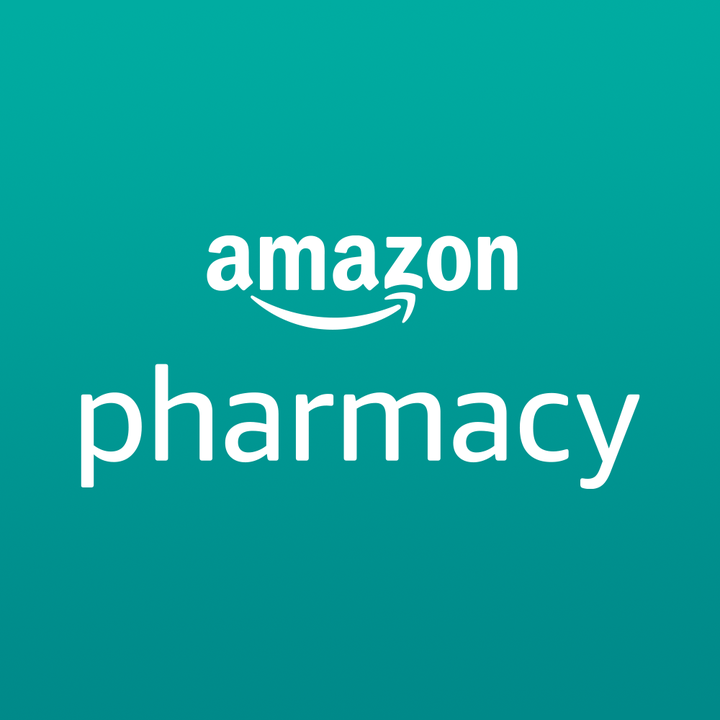
HOW AMAZON IS GOING AFTER PHARMA
Amazon took its first major step in the pharmacy space when it acquired the online pharmacy PillPack for around $750M in 2018 and later rebranded the company to PillPack By Amazon Pharmacy.
PillPack delivers users’ medications directly to their homes. Notably, the company sends pills in pre-sorted pouches to be taken at specific times of the day. In addition to sending medications, PillPack includes info sheets that list when to take each medicine, when the current batch of prescriptions will run out, when to expect the next shipment, and more.
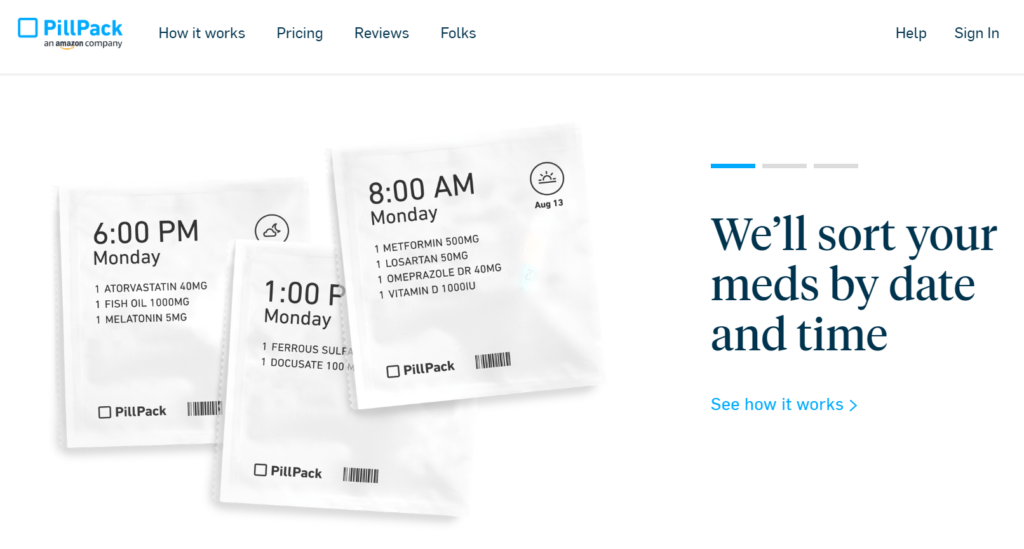
The PillPack user experience is designed to be clean, simple, and more intuitive than traditional pharmacies. Source: PillPack
In November 2020, Amazon announced that it was further expanding its pharmacy delivery business — the company launched Amazon Pharmacy, which allows customers to order prescription medications and offers free delivery and prescription discounts for Prime members.
The offering relies on PillPack’s pharmacy software and fulfillment centers.
But Amazon Pharmacy does have its cons. For example, the service doesn’t ship Schedule II medications.
Though it accepts some insurance, the highest discounts and long-term medication supplies are available to cash patients, which limits the scope of customers Amazon can attract.
The senior director of health care industry research at Gartner, Kate McCarthy, told Advisory Board she sees Amazon Pharmacy as being more focused on increasing the company’s connection with the American household rather than discounts.
Down the road, Amazon may further leverage its tech to expand its healthcare presence.
In 2019, Amazon’s voice assistant Alexa added its first HIPAA-compliant skills, including allowing patients to check on prescription delivery status and reminding patients to take medications.
The Alexa app platform also carries lightweight healthcare apps from institutions like Mayo Clinic and Libertana to answer simple health questions, send alerts in emergencies, and help communicate with caregivers.
The Alexa app platform also carries lightweight healthcare apps from institutions like Mayo Clinic and Libertana to answer simple health questions, send alerts in emergencies, and help communicate with caregivers.
In the future, these capabilities could lead to Amazon getting into the diagnosis, drug recommendation, and even the prescription side of pharmaceuticals — though that future is likely some way off.
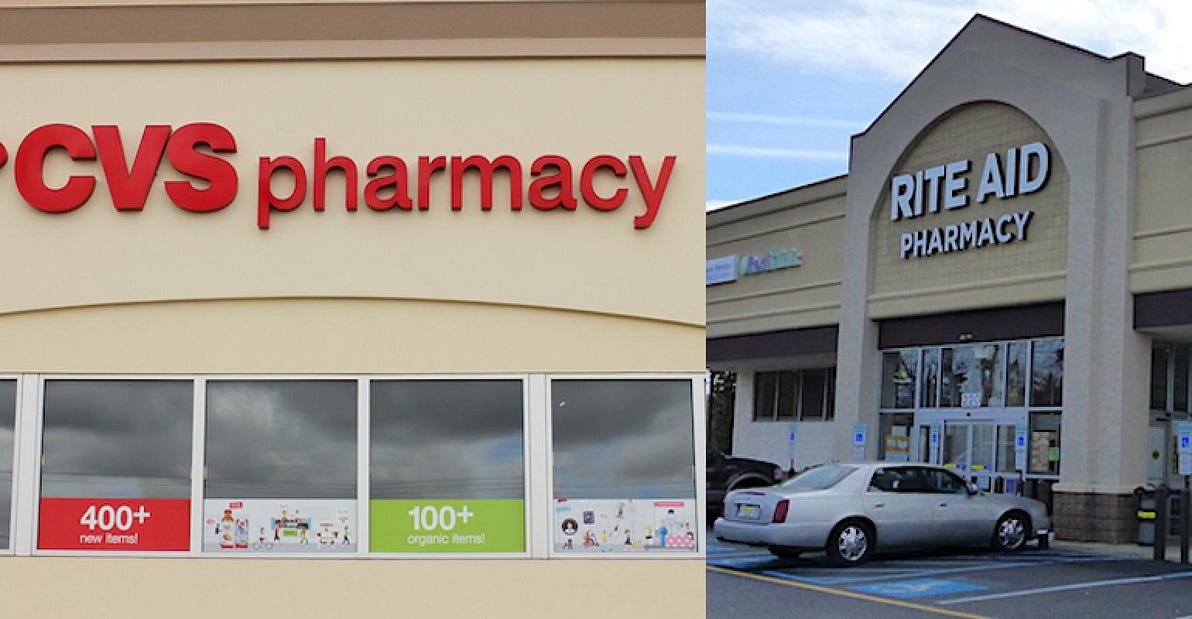
WHO’S AT RISK?
Traditional brick-and-mortar pharmacies
Today, Amazon’s efforts in the pharmaceutical space mainly attempt to disrupt the last-mile of the pharmacy supply chain: retail pharmacies like CVS and Rite Aid.
The current process of picking up a prescription is time-consuming and inefficient, and the price that patients pay for their medicine varies based on factors like geography, insurance, and more.
In the past, retail pharmacies defended against disruption by having the most convenient and the fastest way to fill a prescription for most Americans.
Amid the Covid-19 pandemic, however, prescription delivery became table stakes, with most retail pharmacies waiving their delivery fees, or offering 1–2 day free delivery or same-day delivery for a fee since many patients could not fill prescriptions in person.
But the delivery offerings come at a price for pharmacies. With its vast network of fulfillment centers and its PillPack acquisition, Amazon could offer cheaper and faster delivery, pricing out the retail pharmacies in the long run. Amazon also has footholds in the brick-and-mortar world it could eventually leverage, through Whole Foods and its Amazon Fresh grocery chain.

Pharmacy benefit managers (PBMs)
In the longer-term, Amazon could use these capabilities to take aim at one of the most lucrative — and disliked — parts of the healthcare supply chain: PBMs.
Three PBMs make up nearly 80% of the market in the US: CVS Caremark, Express Scripts, and OptumRX.
Pharmacy benefit managers are extremely lucrative businesses, with over $140B in annual revenue for CVS Health’s PBM division alone.
However, they receive significant criticism due to the lack of price transparency as well as perverse incentives around how PBMs select which drugs to supply to consumers.
Amazon does not rely on pharmaceuticals to drive its profits, so it has the freedom to become a virtually non-profit approach to pharmacy benefit management — and with PillPack, it may have the growth engine required to reach PBM scale negotiating power.
With a large user base of consumers ordering drugs through Amazon, the company may be well-positioned to negotiate bulk discounts from drug distributors. This is already the operating model of companies like GoodRx and BlinkHealth. Amazon, however, would be able to leverage the largest member population in the United States to do it.
With lower costs in place and a more transparent supply chain, Amazon could become an attractive alternative drug supply partner for employers who are unhappy with the rebate-driven PBM model that contributes to high drug costs for their employees.
With lower costs in place and a more transparent supply chain, Amazon could become an attractive alternative drug supply partner for employers …
Originally published at https://www.cbinsights.com.
TAGS: e-pharmacy, retail pharmacy, PBM






